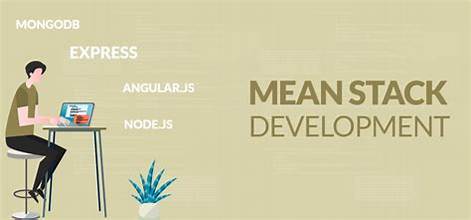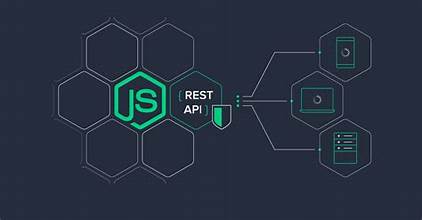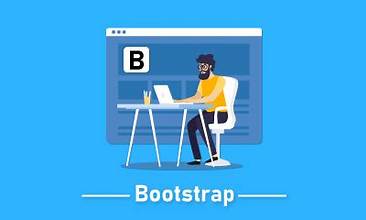Introduction
Node.js Concepts
- RAM vs I/O latency
- Blocking vs. non-blocking
- Syntax and logic
The Fundamentals of APIs and Their Functionality
- Scalar types
- Web Architecture Patterns: the composite pattern, proxy pattern, and facade pattern
REST Overview
- Get option
- Pull option
- Post option
- Delete option
Preparing the Development Environment
- Installing and configuring Node.js
- Installing and configuring Express.js
- Installing and configuring MongoDB
- Testing the installations
Node Modules and Package Manager
- Creating a module
- Loading a module
- Using module functions
- Creating event arguments
- Extending event emitters
- Installing a Node package
- Using a package
- Listing packages
- Updating packages
- Uninstalling packages
- Publishing packages
Working with Express.js
- Creating custom middleware
- Using Express router
- Filtering paths
REST and GraphQL API
- Building a web server
- Handling routes
- Parsing HTTP requests
- Calling endpoints
- Defining schema
- Adding input validation
- Managing mutations
- Adding variables
- Handling errors
CRUD Operations Using MongoDB
- Saving documents
- Querying documents
- Updating documents
- Deleting documents
Authentication and Security
- Creating and registering users
- Generating tokens
- Storing in environment variables
- Protecting routes
- Testing the authorization
Troubleshooting
- Writing a unit test
- Writing an integration test
- Wiring a unit and integration test
Summary and Conclusion
Duration
14 hours (usually 2 days including breaks)
Requirements
- An understanding of database management concepts
- Familiarity with MongoDB
Audience
- Developers
- System administrators
Overview
MongoDB Atlas is a multi-cloud database-as-a-service (DBaaS) platform. It simplifies the setup, operation, and management of MongoDB deployments in the cloud.
This instructor-led, live training (online or onsite) is aimed at developers and sysadmins who wish to use MongoDB Atlas to run, deploy, and manage databases at scale through automation and simplified configurations.
By the end of this training, participants will be able to:
- Set up, configure, and access the MongoDB Atlas cluster.
- Understand the features, architecture, and advantages of MongoDB Atlas.
- Learn how to import/export, query, and manipulate data in MongoDB Atlas.
- Use Atlas APIs to automate database operations and administration.
- Apply the best practices in managing and scaling MongoDB deployments.
Format of the Course
- Interactive lecture and discussion.
- Lots of exercises and practice.
- Hands-on implementation in a live-lab environment.
Course Customization Options
- To request a customized training for this course, please contact us to arrange.
Course Outline
Introduction
- MongoDB Atlas vs DocumentDB vs Cosmos DB
- Overview of MongoDB Atlas features and architecture
Getting Started
- Creating an Atlas account
- Setting up an Atlas cluster
- Configuring network and user access
- Accessing the Atlas cluster
Interacting with Data
- Migrating and importing data
- Loading data
- Performing CRUD operations
- Configuring database triggers
Working with APIs
- Accessing data through Data API
- Managing deployments with APIs
- Performing admin tasks with Realm Admin API
Monitoring Deployments
- Optimizing query performance
- Schema design best practices
- Viewing deployment metrics
- Checking and auditing system logs
Managing Cluster Data and Security
- Data security and privacy compliance
- Backing up and restoring data
- Archiving data in Atlas
- Production best practices
Troubleshooting
Summary and Next Steps
Duration
14 hours (usually 2 days including breaks)
Requirements
- An understanding of MongoDB’s document model
- Python programming experience
Audience:
Developers
Overview
This instructor-led, live training (online or onsite) is aimed at developers wishing to learn how to use MongoDB as the database for Python their applications.
By the end of this training, participants will be able to:
- Install and configure MongoDB
- Understand the difference between accessing a NoSQL document database and a traditional relational databases’ (e.g., MySQL)
- Query a MongoDB database from within Python
- Create and write data to a MongoDB databasse
- Understand MongoDB’s “data processing pipeline”
- Perform real-time analytics and statistical analysis
- Generate reports for dashboarding
- Implement exception handling in Python application
Format of the Course:
- Interactive lecture and discussion
- Lots of exercises and practice
- Hands-on implementation in a live-lab environment
Course Customization Options:
- To request a customized training for this course, please contact us to arrange.
Course Outline
Introduction
Differences between MongoDB and MySQL, PostgreSQL, etc.
Setting up MongoDB
Overview of MongoDB Features and Architecture
- Mapping between a relational database and MongoDB
- Indexing, replication, load balancing, ad hoc querying, etc.
Connecting to MongoDB
Starting a Python + MongoDB application
Understanding the MongoDB Data Processing Pipeline
Reading and Writing to the database
Creating a New Database
Securing your Python Application
Understanding Availability in MongoDB
Scaling Your Application
- On-premise or public cloud
Troubleshooting MongoDB
Summary and Conclusion
Duration
7 hours (usually 1 day including breaks)
Requirements
Working knowledge of MongoDB
Overview
Percona Server for MongoDB is a free, enhanced, fully compatible, open source, drop-in replacement for MongoDB 3.2 Community Edition with enterprise-grade features. It requires no changes to MongoDB applications or code.
Audience
This course is suitable for sysadmins and engineers seeking to switch to Percona Server from preexisting MongoDB instances, or deploy and administrate new Percona Server for MongoDB instances.
After completing this course, delegates will:
- understand Percona Server’s structure and deployment mechanisms
- be able to carry out installation / production environment / architecture tasks and configuration
- be able to assess code quality, perform debugging, monitoring
- be able to implement advanced production like replication, performance tuning and logging
Course Outline
Getting Started
- Installing Percona Server for MongoDB
Percona FT Storage Engine
- Switching Storage Engines
- Configuring PerconaFT
External Authentication
- Overview
- External Authentication Commands
- Environment Setup and Configuration
Percona TokuBackup
- Architectural Overview
- Making a Backup
- Checking Backup Progress
- Controlling Backup Rate
- Restoring From Backup
- Creating New Replicas
- Sharding
Auditing
Duration
14 hours (usually 2 days including breaks)
Requirements
- Experience working with MongoDB
- Programming experience is helpful but not required.
Audience
- Database administrators
- Systems administrators
- Operations and devops professionals
Overview
This instructor-led, live training (online or onsite) is aimed at administrators wishing to solve complex deployment and management problems using MongoDB Ops Manager.
By the end of this training, participants will be able to:
- Install and configure MongoDB Ops Manager
- Set up and manage different types of environments
- Understand and implement MongoDB Enterprise Server specific solutions to solve complex enterprise challenges
Format of the Course
- Interactive lecture and discussion
- Lots of exercises and practice
- Hands-on implementation in a live-lab environment
Course Customization Options
- This training is based on MongoDB Enterprise Server, which includes Ops Manager. Please consult with us to arrange license requirements.
- To request a customized training for this course, please contact us to arrange.
Course Outline
Introduction
- Why a management application for MongoDB?
Overview of MongoDB Enterprise Server Features and Architecture
Setting up MongoDB Ops Manager
Server and Infrastructure Provisioning
Managing the Network
Diagnosing the System
Deploying to Production
Monitoring and Performance Alerts
Performance Tuning
Query Optimization
Backup and Recovery
Disaster Recovery
Advanced Security
Patching the System
Scaling MongoDB
Troubleshooting
Summary and Conclusion
Duration
14 hours (usually 2 days including breaks)
Requirements
Familiarity with basic and intermediate concepts and a few years exposure to on the job experience.
Overview
This course covers the advanced areas in the use of programming languages related to MongoDB, the goal is for the participant to have the ability to completely master the tool.
Course Outline
Advanced Data Manipulations
- Adjustment of the Mongo Shell
- Efficient handling CRUD operations (inserts, queries, updates, deletes)
- Useful admin commands
Performance optimization
- Built in monitoring tools: mongotop, mongostat
- Analysing memory and IO performance
- MongoDB Cloud Manager and Munin
- Identifying sub-optimal queries. Using the query profiler.
- Storage engines: MMAPv1 and WiredTiger
- Explainable object
Indexing and special collections
- Managing indexes and MongoDB indexing internals
- Single field and compound indexes
- Indexes on arrays and sub-documents
- Geo Indexes
- Capped collections, TTL and tailable cursors
Aggregation
- Single purpose aggregation
- Aggregation pipelines
- Introduction to map-reduce
Replication
- How asynchronous replication works in MongoDB
- Setting-up and maintaining replica set
- Using write concern and read preference
- Handling replication failures
Sharding
- How auto sharding works
- Setting up a MongoDB shard cluster
- How to wisely choose a shard key
- Advanced administering a sharded cluster
- Managing unbalanced sharded cluster
- Dealing with chunks (splitting, merging, migrating
Security
- Authentication and authorization in replica sets and sharded clusters
- Managing privileges and custom roles
- Recommendations for secure deployment
Backup and Restore Plans
- filesystem based strategies
- mongodump and mongorestore
- point-in-time recovery
Duration
14 hours (usually 2 days including breaks)
Requirements
There are no specific requirements needed to attend this course, but experience with any database would be useful.
Overview
After the training, you will be able to write extract and modify the data in MongoDB database. You will also learn about powerful Aggregation Pipeline that is a flexible and fast tool for data analytics, and if it’s not enough for you, how to connect your current BI tools like Tableau or Excel to data stored in Mongo.
Course Outline
MongoDB Introduction
- Introduction into NoSQL databases
- NoSQL vs. RDBMS (relational databases)
- What are documents and JSON format
- Creating MongoDB sandbox (local or cloud)
- CRUD operations (Create, Read, Update and Delete)
- MongoDB Shell as a basic client tool
- MongoDB Compass and other clients
Aggregation functions
- Single purpose aggregation functions
- Aggregation pipelines
- Creating views
- Overview of map-reduce
Business Intelligence connector and data migration
- How to use MongoDB data in Excel
- BI connector installation and configuration
- Loading data from existing SQL databases
- Built-in Mongo import/export tools
Performance tuning
- Analysing performance using explain function
- Profiler
- Indexes and special collections overview
- Optimising replica-set nodes for reporting
Duration
14 hours (usually 2 days including breaks)
Requirements
Knowledge of a programming language (Java, PHP, C# or any other supported by MongoDB)
Overview
This course covers everything a database developer needs to know to successfully develop applications using MongoDB.
Course Outline
Manipulating Documents
- Query
- Insert
- Update
- Remove
- Upsert
- Removing databases, fields and others
Document Structure
- Datatypes
- References
- ID
- Keys
- Embedded sub-documents
- Tree structures
- Tailable Cursor
- Two Phase Commits
- Auto-incrementing Sequence field
Aggregation
- Distinct
- Aggregation Pipelines
- Map-reduce
Indexes
- Default _id
- Single Field
- Compound Index
- Multikey Index
- Geospatial Index
- Hashed Index
- Unique
- Sparse









